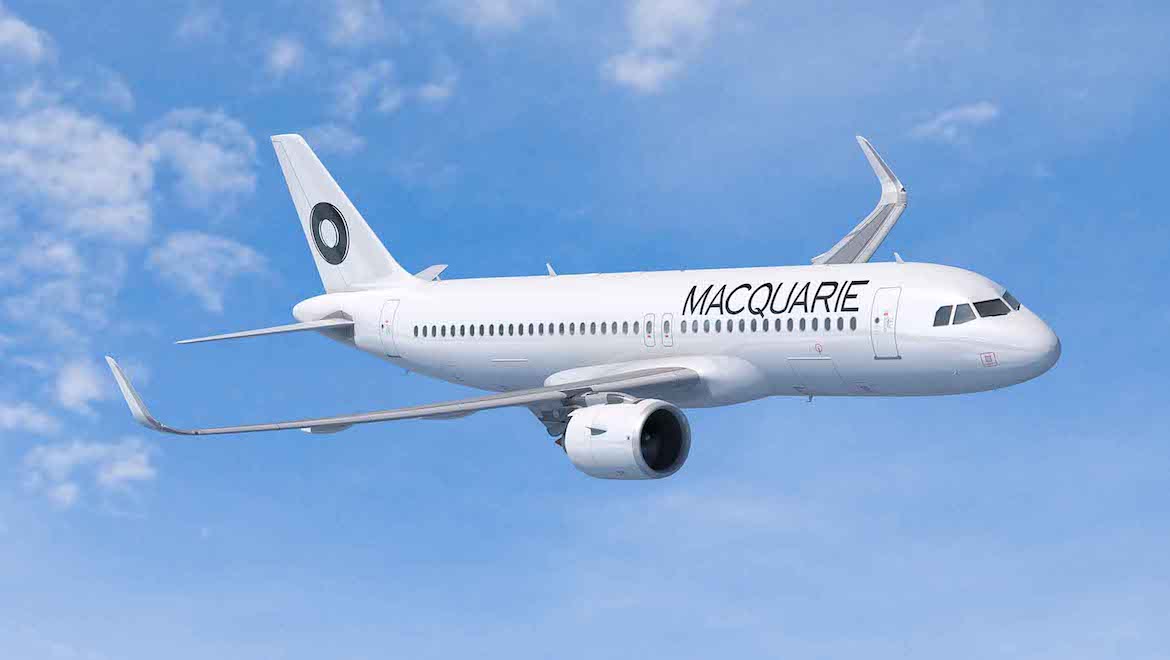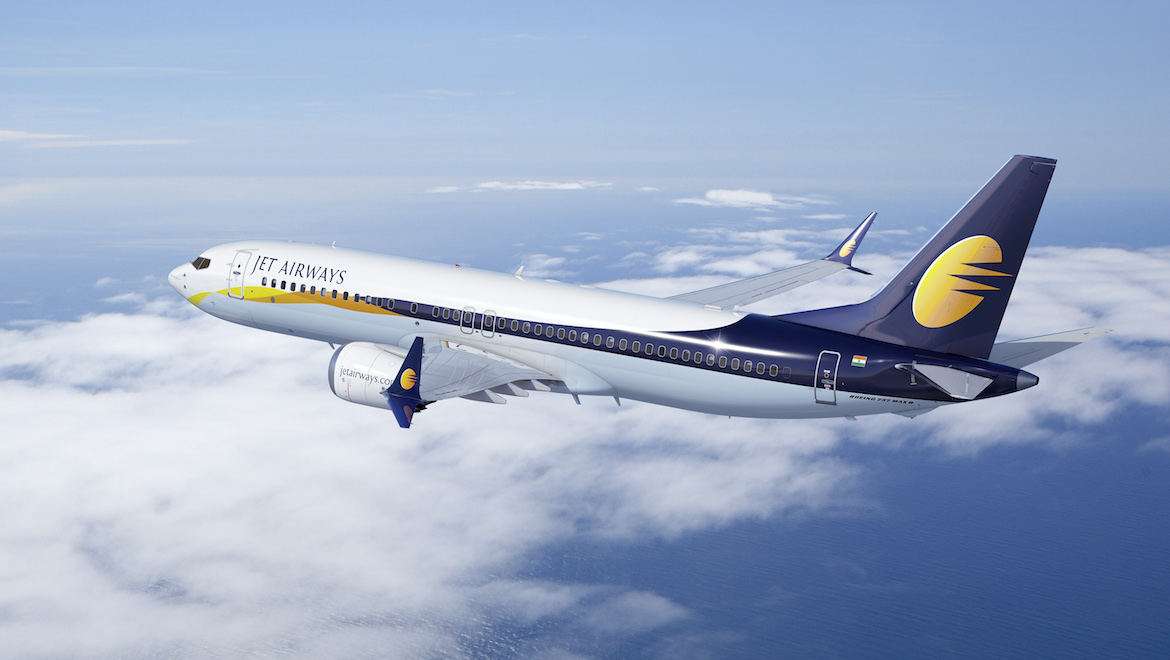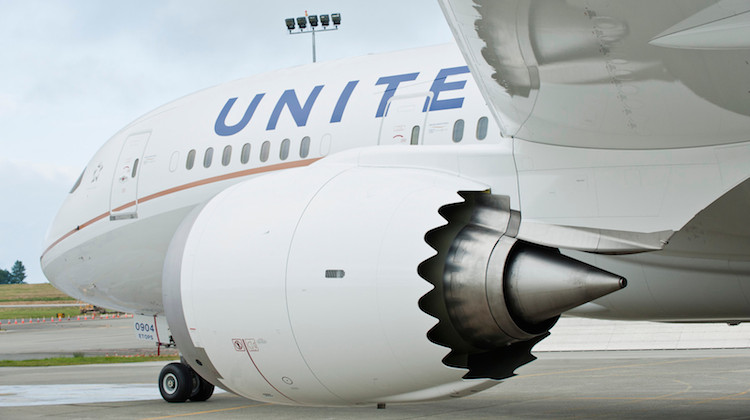On a scorching opening day of the year’s most significant airshow, commercial aircraft news overwhelmingly dominated with orders worth US$43.6 billion, with engine orders of US$2.8 billion adding up to a combined total of US$46.4 billion — some A$62.5 billion — all in all, more than double the first day of orders at the 2016 Farnborough’s airshow. However, there was also a significant military announcement as the United Kingdom government launched a new sixth-generation fighter jet, as John Walton reports from Farnborough.

UK government launches “Team Tempest”
The UK unveiled a sixth-generation fighter nicknamed Tempest that will eventually succeed the Eurofighter Typhoon, with a GBP 2 billion research and development budget for a partnership involving BAE Systems (advanced combat air systems and integration), Rolls-Royce (advanced power and propulsion systems), Leonardo (advanced sensors, electronics and avionics) and MBDA (advanced weapon systems) along with the RAF Rapid Capabilities Office that sits somewhat awkwardly facing the Airbus-Dassault collaboration for a next-generation Franco-German equivalent.
Tempest details were scant, with no speed, altitude or g data given, although headline-grabbing laser weaponry was mooted by Defence Secretary Gavin Williamson, tipped as a potential successor to current Prime Minister Theresa May, who opened the show with something of a flying visit amid political turmoil that has also involved Airbus’ position on Brexit.
Williamson said the Combat Air Strategy announced at Farnborough “leaves industry, our military, the country, and our allies in no doubt that the UK will be flying high in the combat air sector as we move into the next generation”.
“We have been a world leader in the combat air sector for a century, with an enviable array of skills and technology, and this Strategy makes clear that we are determined to make sure it stays that way,” Williamson said in a statement.
“It shows our allies that we are open to working together to protect the skies in an increasingly threatening future – and this concept model is just a glimpse into what the future could look like.”
The Ministry of Defence said early decisions around how to acquire the capability were to be confirmed by the end of 2020, with a final investment decision to be made by 2025.
“The aim is then for a next generation platform to have operational capability by 2035,” the Ministry of Defence said.
✈️ Find out more about the new Combat Air Strategy: An ambitious vision for the future ✈️ https://t.co/lF9nMVFIyK pic.twitter.com/wOFqGhwSW9
— Ministry of Defence ?? (@DefenceHQ) July 16, 2018
Airbus edges Boeing on day 1 of the commercial order race
The commercial conversations at Farnborough (and its odd-numbered year counterpart the Paris Air Show at Le Bourget) often revolve around the order race between manufacturers, and Airbus is spending its first year with Eric Schulz as its chief commercial officer, replacing longtime sales supremo John Leahy.
Number crunching by Flightglobal suggested Airbus ratcheted up 186 orders compared with Boeing’s 175, largely in the re-engined narrowbody segment. A couple of dozen Airbus A350s, Boeing 777Fs — plus a letter of intent for 20 COMAC ARJ21-700s from China’s Urumqi Airlines — and an order for 25 Embraer E-Jet E1 and four Boeing 787-9 Dreamliners rounded out the tally.
Notably, no much-hoped-for orders were received for the Airbus A220 or A330neo, nor for the Boeing 777X. Both airframers will be pleased with the number of narrowbodies, but still need orders to bridge the chasm from the “ceo” to “neo” and from the 777-300ER/200LR to the 777X — and to extend the production road on the re-engined side of the valley.
Airbus going all Oprah to C Series operators. (You get a sticker! And you get a sticker!) #FIA18 pic.twitter.com/AS6wZ4pf7p
— John Walton ?️??? (@thatjohn) July 16, 2018
On the Airbus side:
A350 order for Taipei-based StarLux startup
StarLux, a new airline in Taiwan founded by the former chair of local heavyweight EVA Air, has ordered Airbus A350XWB aircraft for its longhaul operations. The carrier had previously ordered 10 A321neo for shorthaul flights.
The airline is expected to use the widebodies to start trans-Pacific service to the United States, and will take 12 of the stretched A350-1000 aircraft and five of the base model A350-900.
Ten A350s confirmed for Sichuan Airlines
Chengdu-based Sichuan Airlines confirmed an earlier order for 10 Airbus A350 aircraft, to be powered by Rolls-Royce engines. The airline is expected to deploy the aircraft on its long-haul routes, with Europe and North America cited in a relatively detail-sparse announcement, which also did not confirm the variant of the XWB the airline had selected.
Wataniya confirms 25 A320s via Golden Falcon
Kuwaiti carrier Wataniya Airways confirmed an order for 25 Airbus A320neo aircraft, which had previously been the subject of a Memorandum of Understanding (MoU) signed at the 2017 Dubai Airshow.
The aircraft will be supplied by UAE-based Golden Falcon Aviation, “the exclusive aircraft provider of Wataniya Airways”, which operates a four-A320 family aircraft fleet to destinations in Asia, Africa, Europe and the Middle East.
Macquarie adds 20 A320neo to portfolio
Australia’s Macquarie is to add re-engined Airbus narrowbodies to its books, with Macquarie AirFinance Group Limited — a wholly owned subsidiary of Macquarie Group Limited and listed in Australia — placing a firm order for 20 A320neos. Engine selection, the airframer said, will be made at a later date.
The order is Macquarie’s first for the A320neo, and will sit alongside its existing portfolio of 110 A320 and 9 A330 aircraft.

Airbus discloses 80 undisclosed A320neos
In a true example of the airshow order race, Airbus announced that an undisclosed lessor also signed a MoU for 80 A320neo family aircraft, with engine selection to be made at a later date.
On the Boeing side:
30 MAX confirmed for US lessor Jackson Square as Boeing hits 100-customer milestone
Aircraft lessor Jackson Square, part of the Mitsubishi UFJ Lease and Finance Company Group (MUL), signed an agreement with Boeing for 30 737 MAX aircraft, which had previously been listed as from an unidentified customer.
The deal, worth US$3.5 billion under current list prices, marks the one hundredth customer for the Boeing 737 MAX family of aircraft. Jackson Square hopes to use the aircraft in a full-service model for airlines.
“Today’s order is an exciting moment in the history of Jackson Square Aviation,” JSA’s chief executive officer Toby Bright explained. “We are excited to become even more of a full-service partner for our airline customers by expanding our fleet of 737 MAX airplanes as global demand for narrow-body jets continues to rise. The MAX is quickly becoming an important part of our portfolio and we look forward to offering this modern, fuel-efficient and reliable aircraft to airlines around the world. We have carefully evaluated how speculative orders can enhance our long-term business model, and this transaction signifies the next step in that development.”
Jackson Square currently holds a portfolio of over 180 jets, with 49 customers in 27 countries.
Forty-five post-World Cup GOLs for the 737 MAX
Brazilian airline GOL converted 30 of its existing orders for smaller members of the Boeing 737 MAX family to the larger MAX 10 aircraft, alongside a new order for 15 further 737 MAX 8 jets to be delivered through 2028.
“A 737 MAX 10 will enable GOL to comfortably serve more than 30 additional passengers compared to its 737 MAX 8, which seats up to 186 passengers in the airline’s configuration,” Boeing noted.
GOL’s MAX order book has now reached 135 aircraft, which chief executive Paulo Kakinoff says “aligns with our strategic policy of reducing operating costs by operating a standardized fleet. We are confident that the 737 MAX 10 will offer significant competitive advantages for GOL and enable us to continue to modernize with new aircraft. This airplane will allow us to continue lowering the cost of air travel across Brazil, as well as support a larger network, allowing us to add new destinations.”
Boeing delivered GOL’s first MAX last month.
Jet MAXes out 75-jet order
India’s Jet Airways firmed up an order for a further 75 Boeing 737 MAX 8 aircraft with a particularly lavish signing ceremony at Boeing’s chalet, with the jets worth some US$8.8 billion at list prices. The order had previously been listed as an unidentified customer by Boeing.
Jet took its first MAX in June, and chairman Naresh Goyal said that “the MAX will allow us to offer guests a superior and well differentiated experience using a modern, reliable and fuel efficient fleet.”

TAROM brings the pollies to the show for five MAXes
In a signing ceremony that won the “most gratuitous use of a politician” award for the day, Romanian airline TAROM brought its national transport minister to a signing ceremony for five Boeing 737 MAX aircraft.
Boeing confirms 777F deals for DHL
DHL confirmed and expanded an order for 14 Boeing 777F freighter aircraft, based on the 777-200LR airliner, part of which was previously listed as an unidentified customer on the Boeing order book. The cargo carrier also secured purchase rights for seven further freighter aircraft. At list prices, the deal is worth US$4.7 billion.
“We are delighted to announce the acquisition of 14 new 777 Freighters as we renew part of our long-haul fleet with this best-in-class fuel efficient freighter type that will make a significant step towards DHL’s zero emissions target by 2050,” said DHL executive president of global network operations and aviation Charlie Dobbie.

Qatar picks up five extra 777Fs
Boeing also finalised a deal with Qatar Airways for five 777 freighters, previously announced as a commitment this April, with list prices of US$1.7 billion, in what the airframer called “rising confidence in air cargo market and Boeing’s industry-leading freighter family”.
“I am delighted to be further enhancing our cargo fleet and adding five Boeing 777 Freighter aircraft,” said Qatar Airways chief executive Akbar Al Baker. “In the past 15 years, Qatar Airways Cargo has grown steadily and globally, becoming the third largest in the world. We could not have achieved this success without our resilient relationship with Boeing.”
Bullish on the cargo market, Boeing estimates that, in the last year, global air freight demand grew by nearly 10 per cent, and that growth in demand exceeded growth in capacity by a factor of three.
United orders Boeing 787s, Embraer E-jets
In what felt like an early sign of what the proposed Boeing-Embraer partnership would look like, United Airlines announced it is to purchase 25 Embraer E175 E1 (current-generation) aircraft alongside four Boeing 787-9 Dreamliners to expand United’s existing fleet.
“These new 787 aircraft are another step in our widebody replacement strategy, and we will continue to roll out new announcements in the future as we implement our comprehensive fleet plan,” Gerry Laderman, United’s senior vice president of finance and acting chief financial officer, said, noting that the Embraers, which will replace ageing CRJ-700s on a 1:1 basis, “will provide our customers with a superior product that offers the latest in onboard amenities and comfort and will be a terrific addition to our fleet.”
While Embraer and Boeing are not yet officially working together under the auspices of their recently announced partnership, United’s announcement was issued at 1201 local time in the UK, while Embraer’s release of the news arrived at 1210 local time, with Boeing’s reaching this journalist’s inbox at 1213.
The “but wait, there’s more” effect was rather to suggest that four Dreamliners were a set of carbon-fibre steak knives with the US carrier’s purchase of a set of comfortable aluminium-tubed regional jets.

And in good news for both Seattle and Toulouse:
Growing lessor Goshawk hedges with A320neo and 737 MAX
Having acquired Dublin’s Sky Leasing last week, Goshawk Aviation placed its first direct sale and purchase agreements with both Airbus and Boeing. Hong Kong-based parent companies Chow Tai Fook and NWS will contribute approximately 30 per cent of the funds required.
“As a maturing leasing business, placing a direct manufacturer order is a natural and important part of Goshawk’s growth strategy and we are delighted to have concluded these two transactions with Airbus and Boeing,” said Goshawk chief executive Ruth Kelly. “The new technology A320neo and 737 MAX family aircraft will be the cornerstone of Goshawk’s business going forward and this direct order will allow us to offer an additional product to our many airline customers, in addition to the sale and leaseback and balance sheet solutions that we will continue to deploy.”
Boeing: you get a services contract, and you get a services contract
Services are an increasingly lucrative part of the picture for airframers, and announcing a plethora of services agreements today, Boeing explained that:
• Cargo specialist Atlas Air signed up for 20 Landing Gear Exchanges for its Boeing 747-8F fleet. “Through the program,” Boeing said, “operators receive an overhauled and certified landing gear from an exchange pool maintained by Boeing, with stocked components and supporting parts shipping within 24 hours.”
• Emirates signed up 150 Boeing 777-300ER, 777-200LR and 777-300 aircraft for Boeing’s Optimised Maintenance Program, which is the largest fleet win for Boeing’s OMP offering of customised maintenance.
• EVA Airways agreed to purchase a multi-faceted set of Boeing offerings, including Component Solutions (where, the airframer says, “Boeing and its partners own, manage, and maintain a global exchange pool inventory for convenient access”), quick engine change solutions, and a further 10-year contract for Boeing’s Jeppesen electronic flight bag and chart products.
• In other non-denominational EFB news, Boeing signed up Hawaiian Airlines for electronic flight bag services for both its Boeing 717 and 767 fleets, as well as its A330 and A321 aircraft. Boeing says this will “enhance navigation and situational awareness and simplify preparation and in-flight procedures across the Hawaiian fleet.”
• Lion Air Group’s Malindo Air is also signing up with Jeppesen, to offer dispatcher training services at its Kuala Lumpur operations centre. Boeing said: “The program, open to students across the aviation market, provides the foundation for multiple aviation career opportunities available with a dispatcher license.”
• Okay Airlines of China will use Boeing’s Airplane Health Management (AHM) for its 737 MAX fleet, which the airframer says brings AHM enrolments on the MAX to approximately 65 per cent. AHM, Boeing notes, “improves operations using predictive analytics supporting maintenance and engineering”.
• Canadian carrier WestJet also signed on for AHM, bringing the number of customers for the product to a round one hundred. It will use the system to provide predictive analytics for its 787 fleet, said Boeing.
• Scandi-leisure-LCC with transatlantic ambitions Primera Air and China’s Xiamen Airlines are also named on the services list, with Boeing trailing signing ceremonies on Tuesday, Farnborough’s second day.
The military side of the show was not left out of Boeing’s services bonanza either:
• Boeing and the Royal Netherlands Air Force signed a five-year Performance Based Logistics support agreement for its rotorcraft, covering the Dutch fleet of AH-64 Apache and CH-47 Chinook helicopters. This agreement, entered the day before Farnborough at the Royal International Air Tattoo, will, Boeing says, “combine Dutch Chinook and Apache support services into one integrated and efficient customer support program.”
• The US Air Force signed a Boeing contract worth “up to” US$986 million “to provide crew instruction and operate, sustain, modify and upgrade the C-17 Aircrew and Maintenance Training Systems” over up to six and a half years.
• Boeing and the USAF also agreed a sole-source contract “to repair, support, configure and provide parts obsolescence management for F-15 radars”, where “support includes Boeing field service representatives embedded into each F-15 flying squadron throughout the Combat Air Forces and sent worldwide wherever needed.” Boeing says it “will provide engineering, customer training, system analysis and integration of all radar types throughout the U.S. Air Force F-15 fleet.
VIDEO: Watch the 737 MAX 7 flying display from the 2018 Farnborough International Airshow in this video from Boeing’s YouTube channel.
















Tropicalcat
says:Initially I’d have said the UK was mad to develop its own new 6th Generation plane but after seeing Trump with Putin sadly think it’s prudent.
TwinTiger
says:I’m still waiting for the UK Government to announce their purchase of the Wedgetail …
Daryl
says:More amazing stuff out of Farnborough . Check out the latest version of the 130J…..Forget The Fighters, Lockheed’s LM-100J Super Hercules Demo Slayed At Farnborough – The Drive
Paul
says:Just mockups and showing off! Nothing will come from it!